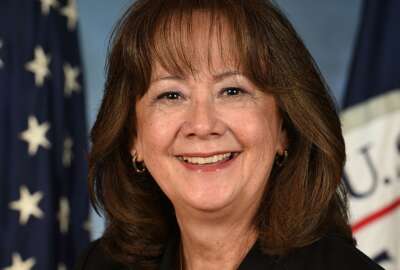You might not think a $23 billion annual budget will have you looking for ways to pinch pennies, but if you’re NASA, the cost to explore the universe can be out of this world.
Pinar Moore, deputy project manager at NASA, said watching how they spend their money is part of NASA’s culture.
So some 15 years ago, NASA planted its flag into shared services to consolidate and offer centralized services for the space agency’s 11 centers around the country and beyond.
“Everybody was doing their own human resources, travel processing and financial management,” said Moore on Federal Monthly Insights – Digital Modernization: Automation month.
The shared services effort is headquartered at Mississippi’s Stennis Space Center.
“Basically it provides services such as human resources, procurement, financial management training, an enterprise service desk, a customer contact center, and digital imaging, to name a few,” Moore said on Federal Drive with Tom Temin. “I have no doubt that the incoming administration will also see the value of being competitive with private industry and getting the right people in for cybersecurity jobs.”
There is a major IT infrastructure that supports those services.
“The infrastructure includes pretty much everything,” Moore said. “We have three major contracts fulfilling the majority of the requirements in terms of delivery of the networks, and delivery of the hardware and software on all the application requirements across the networks, and storage solutions, etc. These are all handled throughout the agency, but we collaborate in today’s world. So we have people all over the USA.”
The philosophy of being tight-fisted, but also reaching beyond the technological cutting edge, has NASA always looking for the best options.
“We are looking at new tools, new services offered across the agency, such as smart anything, WiFi anywhere, laptops versus desktops, Bluetooth video capabilities, apps for our phones, small mobile devices, faster network capabilities, storage solutions, and the list goes on and on,” Moore said.
Moore said NASA is continuously looking to improve, by consulting their customers, relationship managers, and subject matter experts.
“We investigate all the network and infrastructure problems, hardware, software and IT services incident data to see what is working and what’s not working for us,” Moore said.
And one other key ingredient to staying at the top of their technological game, is asking questions.
“Why do we need to modernize? What types of problems are we trying to resolve? How will this change deliver value to our customers? What are their expectations? Do they have the right skills to adapt? Will it require a culture change? How is our current architecture? Can it be simplified? Can we make it more secure, robust, flexible or accessible? Are there any opportunities to consolidate same and similar services? What are our unique capabilities? How will modernization enhance these capabilities? Are there better and cheaper alternatives to currently what we have? Will the changes create unmanageable risks? How do we migrate? What are the critical steps? How do we realign resources to meet the demand and for transformation?”
But the most important question according to Moore is, “Can we deliver quickly?”
Copyright
© 2024 Federal News Network. All rights reserved. This website is not intended for users located within the European Economic Area.

